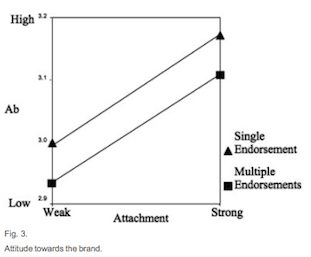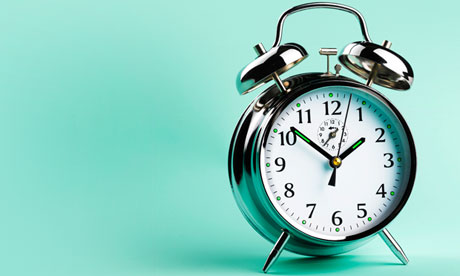Smoothies and frappes for one dollar sounds like a great deal. However these Burger King drinks are only offered for a limited time, only during a particular weekend. So, what to do? To not miss out on the bargain, this limited availability encourages people to purchase a drink. The perception of a deal as scarce leads to the perception of value, leading people to desire it more. In this case, smoothies and frappes for $1 may be seen as a rare occurrence, making it more appealing.
To further
investigate the mechanism behind the effect of scarcity on consumer behaviour,
Aggarwal, Jun, and Huh (2013) examined people’s intentions to purchase a
product after viewing advertisements presenting products that were limited in
quantity, as well as products limited in time availability. Consumer competition was
proposed as a reason for the scarcity effect, suggesting that people are
motivated to purchase “rare” items and in the near future, so that other people
may not buy it before them, which would cause them to lose their chance. In the
study, one hundred and twenty-one students were placed in one of three
conditions: time limited, quantity limited or control. They viewed print
advertisements with messages such as “First 100 customers only” and “For six
days only”. The participants then rated their purchase intention on a
seven-point scale. They also rated their feelings of consumer competition on a
seven-point scale.
The study found that both time-limited (M = 5.35) and quantity-limited (M = 4.39) advertisements were effective in raising consumer intentions to purchase a product, compared to the control group (M = 3.83), as displayed by the purchase intention scores (F (2, 120) = 16.48, p < .01). Limiting quantity appeared to be most effective. Furthermore, consumer competition appeared to be a significant mediator between scarcity and consumer intentions. In the regression analysis, the coefficient for scarcity message declined from .769 to .445 at the introduction of consumer competition, compared to a regression equation that only incorporated scarcity.
 As
a result, the use of a time limit by this Burger King advertisement would be an
effective strategy to increase consumer spending during the advertised weekend. The
company would do well to continue employing this tactic, due to consumer
competition, at least in part. Despite this, focusing on advertisements that
present items that are limited in quantity may do even better, as suggested by
this study. For example, Burger King might advertise: “The first 50 people to
purchase a burger will receive 30% off”.
This may further increase sales on top of time-oriented messages.
As
a result, the use of a time limit by this Burger King advertisement would be an
effective strategy to increase consumer spending during the advertised weekend. The
company would do well to continue employing this tactic, due to consumer
competition, at least in part. Despite this, focusing on advertisements that
present items that are limited in quantity may do even better, as suggested by
this study. For example, Burger King might advertise: “The first 50 people to
purchase a burger will receive 30% off”.
This may further increase sales on top of time-oriented messages.
The study found that both time-limited (M = 5.35) and quantity-limited (M = 4.39) advertisements were effective in raising consumer intentions to purchase a product, compared to the control group (M = 3.83), as displayed by the purchase intention scores (F (2, 120) = 16.48, p < .01). Limiting quantity appeared to be most effective. Furthermore, consumer competition appeared to be a significant mediator between scarcity and consumer intentions. In the regression analysis, the coefficient for scarcity message declined from .769 to .445 at the introduction of consumer competition, compared to a regression equation that only incorporated scarcity.
 As
a result, the use of a time limit by this Burger King advertisement would be an
effective strategy to increase consumer spending during the advertised weekend. The
company would do well to continue employing this tactic, due to consumer
competition, at least in part. Despite this, focusing on advertisements that
present items that are limited in quantity may do even better, as suggested by
this study. For example, Burger King might advertise: “The first 50 people to
purchase a burger will receive 30% off”.
This may further increase sales on top of time-oriented messages.
As
a result, the use of a time limit by this Burger King advertisement would be an
effective strategy to increase consumer spending during the advertised weekend. The
company would do well to continue employing this tactic, due to consumer
competition, at least in part. Despite this, focusing on advertisements that
present items that are limited in quantity may do even better, as suggested by
this study. For example, Burger King might advertise: “The first 50 people to
purchase a burger will receive 30% off”.
This may further increase sales on top of time-oriented messages.Yida Liao
Aggarwal, P., Jun, S.Y., Huh, J.H. (2013). Scarcity messages. Journal of Advertising, 40, 19-30.












.png)



